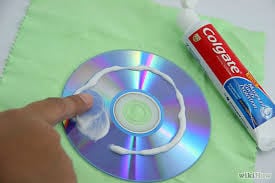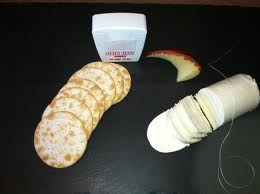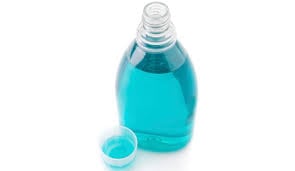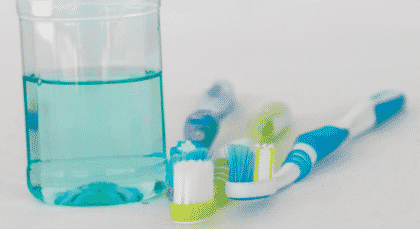People are always looking to make things as useful as possible, to fit into a budget and to keep a small space from growing in clutter. Alton Brown once said during the filming of his TV show Good Eats, “My kitchen isn’t huge. I don’t have enough drawers and shelf space to have a million single use items. The only unitasker allowed in my kitchen is the fire extinguisher.” That is a very common concept in many homes and apartments across the country. We may be labeled as consumer based beings, but we also value space, time and budgets. With that in mind, many people have found uses for their basic dental products. Why wouldn’t they, dental products can always be found in almost every home. Toothpaste, floss and even mouthwash are always just a walk to the bathroom away. Even in hotel rooms! So it’s only the natural evolution of household products that our dental health products have found new and, in some cases, odd uses.
Odd Uses For Dental Toothpaste

Toothpaste is a dental product that was initially invented as a paste, gel or powder to help in the oral fight against plaque and decay causing bacteria. In today’s anti-unitasker society, however, people have found quite a few ways to use toothpaste in ways other than their intended use.
There are six specific ingredient agents that can make toothpaste the perfect “odd-job household tool.” These ingredients are:
- Mild Abrasive to remove food debris and residual surface stains
- Humectants to prevent water loss
- Thickening agents to bind and stabilize the toothpaste (so it’s not a loose mess on your brush)
- Detergents to clean, freshen breath and foam, often including antibacterial agents
- Stannous Fluoride to reduce mild inflammation
- Modified Silica Abrasives to whiten/brighten teeth by physically removing stains
The mild abrasives in toothpaste can help with
The mild abrasives have been proven to help buff out small-mild scratches in CDs, DVDs and chrome. They also help to polish up chrome, metal/glass/gemmed jewelry and clean piano keys.
The abrasives and detergents in toothpaste can help with
The abrasives and detergents work together to remove crayon from walls without upsetting the finish or paint, remove ink or make-up stains from clothing without staining or smearing, will remove watermarks from wooden furniture without removing the polish or stain, cleans the gunk from clothing irons and will deodorize plastic containers such as baby bottles.
The thickening agents and humectants in toothpaste can help with
The thickening agents and humectants make toothpaste the perfect quick fix for defogging goggles, plastic glasses and mirrors, for spackling small nail holes and dings in drywall (not as a permanent fix but for those quick fixes just before the landlord plans to stop by).
The stannous fluoride in toothpaste can help with
Stannous Fluoride will help reduce the appearance of facial blemishes by reducing the redness and swelling.
The silica abrasives in toothpaste can help with
The silica abrasives are perfect for removing scuffs marks and brightening those white soled sneakers and your white patent Easter sandals.
Odd Uses For Dental Floss

Dental floss is a long thin strand of thread-like material made up of thinner filaments twisted together. Evidence of use of this dental product has been found as far back as the time of cavemen. Floss can be waxed or unwaxed, flavored or unflavored, flat or round, according to one’s preference. At its “modern” conception floss was made of fine silk fibers twisted together to make long strands but nowadays it’s typically made of nylon filaments, braided or twisted together (much like embroidery thread). Its make up is why the dental product can withstand quite a bit of pressure, weight and pull. Floss is remarkably strong for something so small.
How strong is dental floss?
A single strand of floss can also be used as twine, a kite string, fishing line, ornament hangers, support for climbing plants and sewing thread (especially for repairing umbrellas, tents and anything else that may need to be waterproof).
Dental floss uses in the kitchen
A single strand can also be very useful in the kitchen. It can alleviate the annoying noise of a leaky faucet. Tie a strand around the nozzle of the leaking faucet and allow one end to drop down into the sink, the drips will ride the floss down to the sink like a silent slide. Floss makes the perfect soft cheese slicer, cake cutter and is great for removing baked goods from pans if they get a little stuck. You can also use a single strand of floss to peel two stuck photos off each other without ruining the photos.
Other uses around the house
Twisting a few strands together can provide enough strength to hang frames, pictures and canvases, or act as a clothesline for hanging laundry.
Odd Uses For Mouthwash

The basic ingredients of mouthwash are water, alcohol (unless otherwise specified on the label), cleansing agents, flavoring agents and coloring agents. Active ingredients of this dental product vary depending on the type of mouthwash and what effect you’re looking to gain from it.
- Antimicrobial/antibacterial mouthwashes act directly on bacteria to help reduce plaque, decrease the severity of gingivitis and the inflammation associated with it and kill the bacteria that causes bad breath.
- Fluoride mouthwashes help reduce tiny lesions (tooth decay) on tooth enamel and make teeth more resilient to to decay.
- Mouthwashes with astringent salts serve as temporary deodorizers to mask bad breath and also reduce gum tissue inflammation.
- Mouthwashes with specific odor neutralizers act by chemically inactivating odor causing compounds.
People have managed to find multiple uses for mouthwash
Naturally the antimicrobial and antibacterial agents and any mouthwash with alcohol have been used as disinfectants for laundry, cleaning bathroom surfaces including the toilet, cleaning grout and inhibiting the growth of mold, clearing up nail fungus, reducing athlete’s foot flares and sanitizing hands. It can also be used in a pinch as an antiseptic for small wounds, bug bites and fresh piercings.
The astringent salts are great for drying out blisters and reducing the appearance of bruises. These kinds of mouthwashes also help soothe bug bites, relieve the sting of poison ivy and poison oak. Any kind of mouthwash with an odor neutralizer can remove tear-inducing odors from hands as well. If you are cutting an onion and know it will make you cry, rinse your hands with mouthwash first, cut the onion and then rinse with the mouthwash again. No tears.
Mouthwash can also be used to clean TV and computer screens without streaking. But just barely dampen the lint free cloth before smearing it on your screen. Too much can gunk up the works.
Of course, feel free to let your inner scientist out and experiment with these dental products yourself. Knowing the ingredients in each dental product can allow you to be creative in your endeavors. Just remember to leave enough for their original intended purpose or have a spare tube of toothpaste, container of floss and bottle of mouthwash on hand. It would be tragic to find some miracle use for these dental products only to run out and not be able to tend to your oral health.


